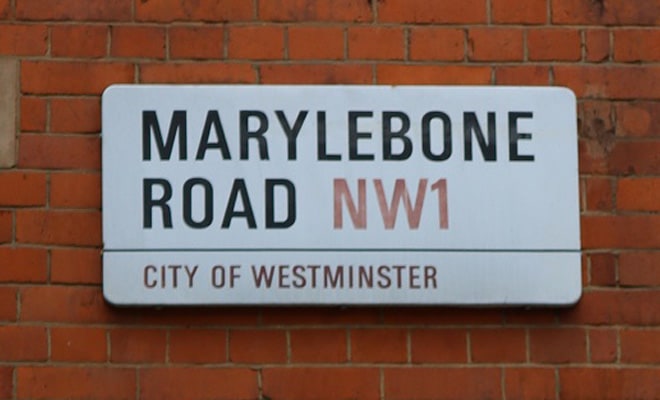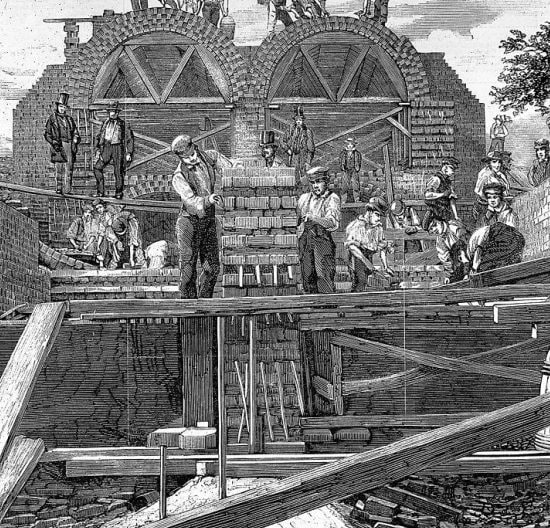Attic have built a high-tech storage facility just an arrow’s flight from Regent’s Park. Tis indeed an area that merits further investigation, my dear Watson.
wasn’t called Marylebone to start with. The happily titled ‘Doomsday Book’ of 1068 recorded it as a mishmash of muddy fields with less than 50 residents and a value of a paltry 52 shillings (a bit like Swillington outside Leeds today). Back then the area was known as Tyburn or Tybourne – a Brexit style contraction of ‘teo bourne’, or in modern parlance, boundary stream.

Meet Me Under The Tyburn Tree
Tyburn was a famous hang out for citizens who had been sentenced to death. The gallows were located where modern Marble Arch stands – literally straight down Baker Street from our new home on Park Road, NW1 6XX (which you’ll be pleased to hear is conveniently located outside of the Central London Congestion Zone).
The first recorded execution took place in 1196, when William Fitz Osbert was ‘hung by the neck until he was dead’ for having the audacity to take part in the Popular Uprising of the Poor, which was popular with the poor, but obviously not the law, or polite London society – if such a thing has ever really existed.
Fun For The Whole Family?
Over the next 650 years, thousands of people lost their lives at Tyburn for various infractions such as being a catholic, being a traitor or being so hungry you got caught ‘cutting her ladyship’s purse’ to pay for a loaf of bread. In 1571 a permanent triangular frame was erected – hence ‘The Tyburn Tree’ – a mammoth structure that could, and sometimes did, hang up to 24 people at once.
Imagine.
That’s two football teams and both managers. In fact, a good old-fashioned Saturday afternoon hanging was a popular form of spectator sport. If Sky were around back then, they would definitely have offered the yokels pay-per-view live coverage.
Even without Mr. Murdoch’s encouragement, it’s recorded that in 1724 a huge jeering home crowd of 200,000 ale-swilling rubber-necking spectators celebrated the hanging of highwayman Jack Sheppard. Ironically, a whole bunch of people got their pockets picked as they were engrossed in a public execution that was designed to deter the audience from committing any crimes.
The Etymology of Mary Le Bone
It wasn’t until the 1400s, with the building of a church dedicated to Mary (Mother of G and J) on the banks of the bourne, that the area surrounding our freshly completed delightfully appointed subterranean 2-floor Attic store became known as St Mary la Bourne.
Over the years, London accents, general laziness and linguistic contraction turned the name into the “Marylebone” that tourists still mispronounce to this very day.

The Dark Origins of The Park
The whole area surrounding Attic Self Storage in Marylebone was originally part of the vast forest of Middlesex and was called Marylebone Park after the village and manor nearby. There were thick woods, especially going up the slope towards Primrose Hill. But on the lower ground, nearer to our new home, the woods were more open and were perfect for raising deer.
Dear oh deer.
The potential for blood sport caught the greedy eye of King Henry Vlll and in 1538, he seized the park from the owner, the Abbess of Barking, pushed her over, kicked her cat and turned 554 acres of her land into his own private hunting chase. A ditch and rampart kept the deer in and the poor out.
In 1544 Henry consolidated his theft by building a royal hunting lodge on the stolen land. Although after exhausting himself by wearing a codpiece and working his way through his 6 unfortunate wives – Divorced, Beheaded, Died, Divorced, Beheaded, Survived – the original fat pie-eater didn’t have much time to enjoy killing wild animals, because he died himself just three years later from an ulcerated leg wound and, of course, eating too many pies.
Hark! Can you hear the sound of every young and available female royal across Europe breathing a collective sigh of relief as it echoes down the ages?
TO BE CONTINUED…
Next week: more on the landscaped loveliness that is modern Regent’s Park, along with a look at our closest architectural neighbours here in NW1 – Lord’s Cricket Ground, The Central London Mosque, The Sherlock Holmes Museum, Madame Tussauds and the concrete and wire-framed marvel that is London Zoo.



